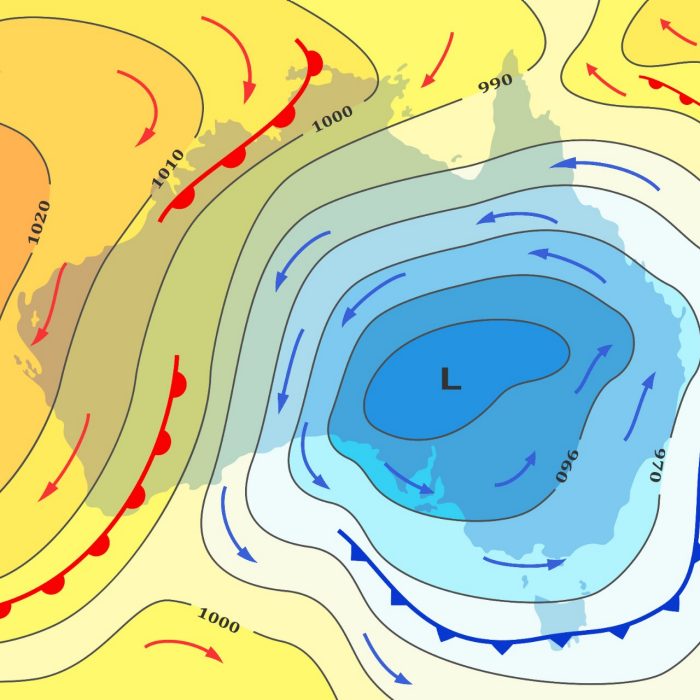What do cold fronts do to bushfires?

The relationship between bushfires and cold fronts may seem counter intuitive, as cold fronts are typically associated with cooler temperatures and rain.
However, in south-east Australia, before a cold front passes it will typically draw hot and dry northwesterly winds from Central Australia to the region. This can dry out fuels and lead to more dangerous fire weather.
As the front approaches, winds get stronger and can abruptly change direction, which can change the size and shape of a fire front and lead to erratic fire behaviour. This is extremely dangerous for firefighters on the fire ground or homeowners defending their property.
Cold fronts can also produce atmospheric instability which, when coupled with the extreme fire, can cause a pyrocumulonimbus, or fire thunderstorm. There were 44 of these during Black Summer, more than ever before seen in a single season.
What might this mean for future bushfire seasons?
Right now, no one can be certain, but there is cause for concern.
Cold fronts had previously been shown to escalate disastrous conditions during individual bushfires, but Black Summer was the first time this was seen across an entire season – this is significant.
The frequency and intensity of strong cold fronts were unprecedented in many of the areas that burned during Black Summer. This was part of a long-term change in weather patterns over southeast Australia during the past 70 years.
There is some evidence to suggest that southeast Australia will experience a higher number of extreme cold fronts in future, due to atmospheric changes caused by greenhouse gas emissions, but this needs further research.
If proven true however, this could cause greater drying out of fuel loads in forested parts of the country and lead to more devastating bushfires.
Combine this with the increased likelihood of hotter and longer heatwaves caused by climate change and it paints a concerning picture of what is to come.
Associated schools, institutes & centres
Pioneering world-class research to sustain our future
From heatwave modelling and tracking extreme climate events to developing low-cost, low-energy water purification processes for remote and developing communities, see how our scientists are creating innovative solutions to the biggest issues facing our planet.
